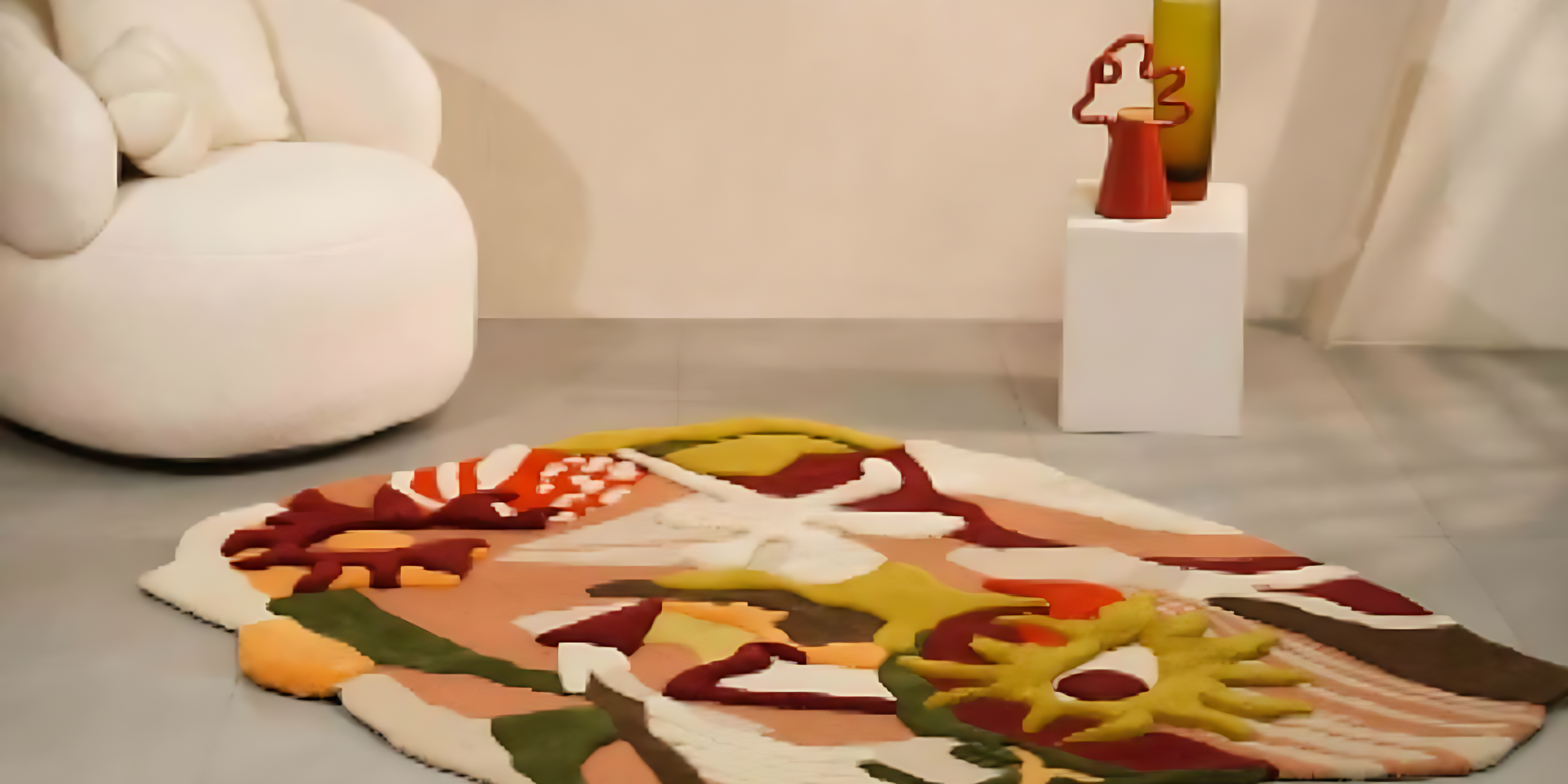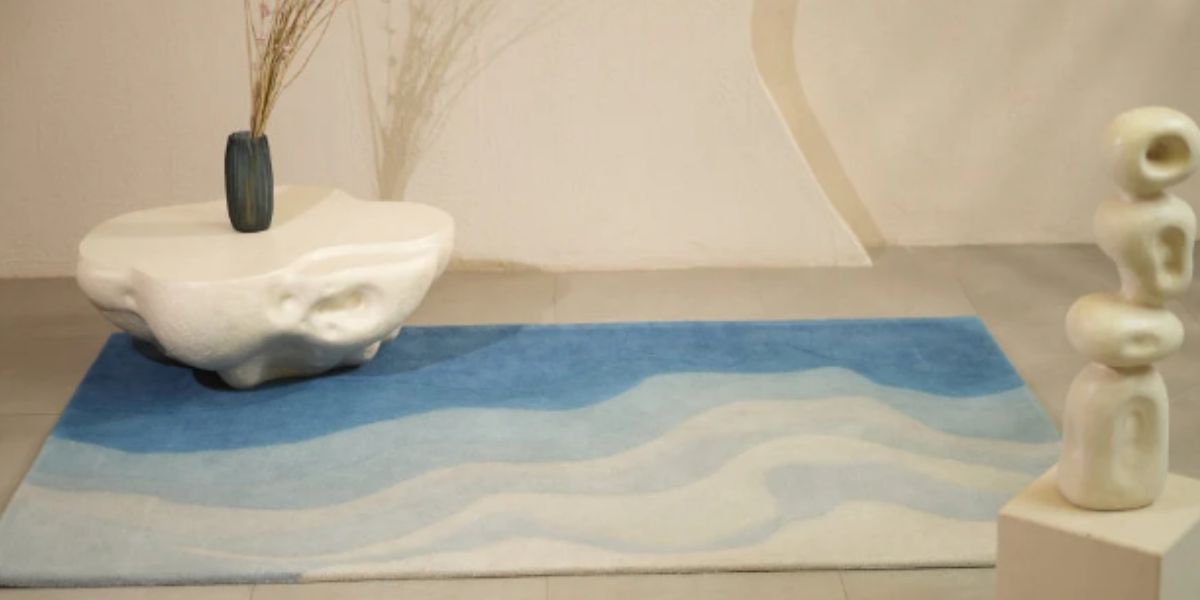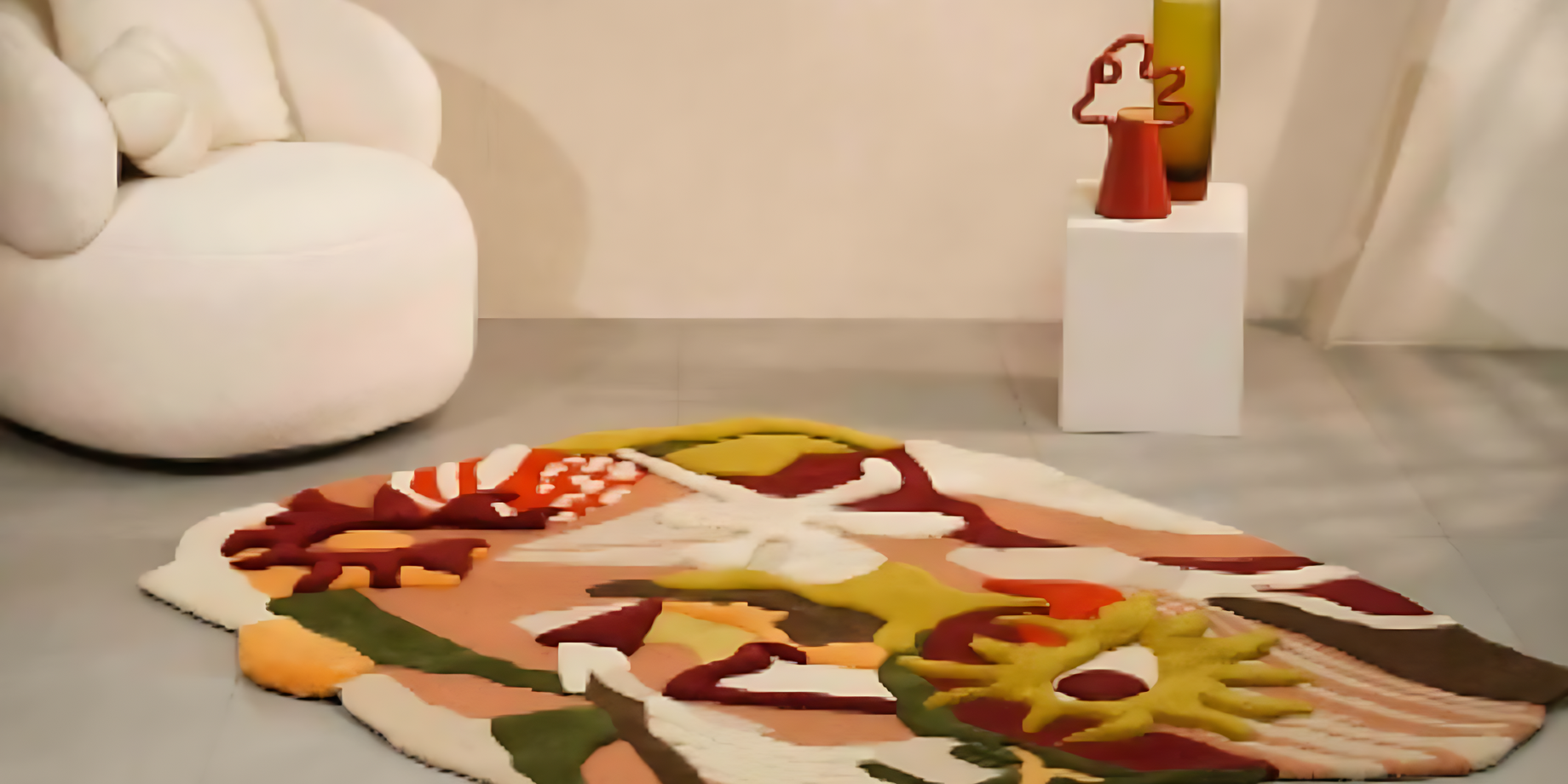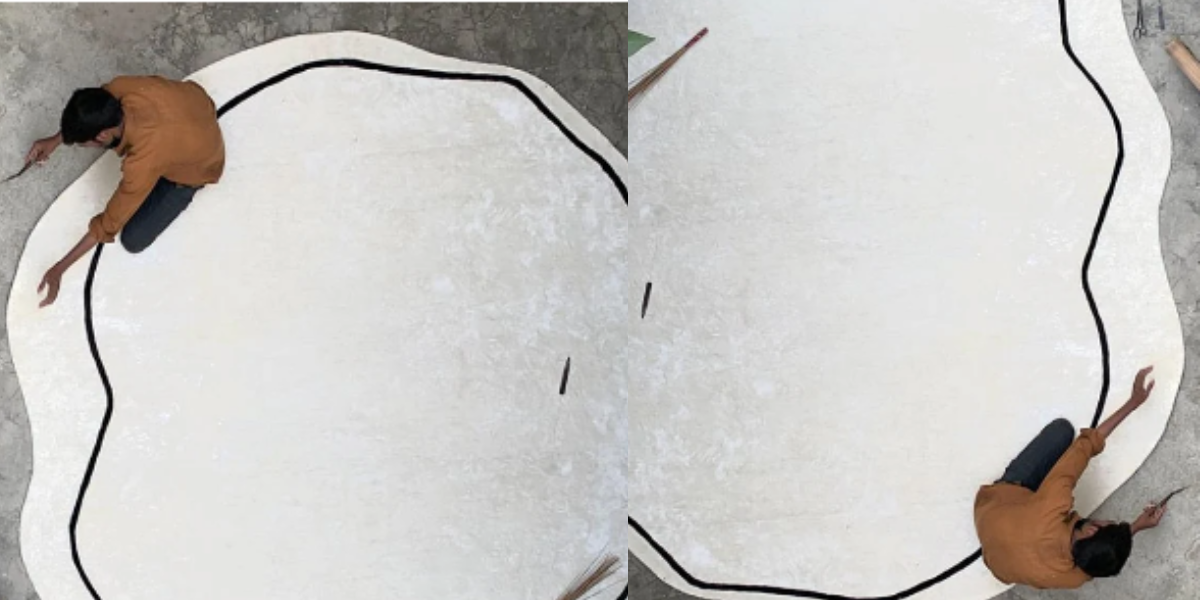Colour is one of the most powerful tools in interior design. It can completely alter how a space feels—warm and cozy, airy and minimal, or bold and dynamic. Yet, one of the most overlooked ways to use colour effectively is through rugs. The right rug doesn’t just tie a room together; it tells a story.
Whether you want your rug to blend softly into your existing palette or create an exciting contrast that draws the eye, mastering the colour story of your interiors is key.
Understanding the Psychology of Colour in Interior Design
Colour shapes emotion. It defines how a room feels before you even sit down. Cool hues like blues and greens bring calmness, while warmer tones such as rust, ochre, and terracotta infuse warmth and grounding energy. Neutrals, think ivory, beige, or dove grey, act as visual breathers, allowing the eyes to rest.
At Loops by LJ, colour isn’t chosen by accident. Every design, from the organic warmth of Nature’s Carve rug to the sculptural geometry of String Theory rug, is guided by principles of emotional resonance. Each rug acts as a visual and tactile anchor that subtly affects how we perceive space and comfort.
Complement or Contrast: The Core of Colour Harmony
What Does It Mean to Complement Your Décor?
Complementary rugs are those that merge seamlessly with the tones of your furniture and walls. For example, a Moss Mania rug, with its rich olive greens and earthy browns, enhances a neutral-toned living room without overpowering it. Complementary rugs are perfect when you want your space to feel cohesive and serene.
And What About Contrasting Rugs?
Contrasting rugs, on the other hand, are bold and expressive. They introduce energy and dimension. Imagine pairing a crisp white sofa with a deep crimson rug like Flame & Flow, or combining muted grey décor with a charcoal and ochre design from the Terrain collection. The contrast doesn’t just stand out—it tells a story of personality and design confidence.
When selecting between the two, consider what you want your room to feel like: unified and calming, or dynamic and full of visual tension.
How to Choose Complementary Rugs for a Cohesive Look?
A complementary colour scheme works by layering similar tones in varying shades. For instance, soft taupe walls with a beige sofa pair beautifully with a luxury rug for living room in a muted cream or sand tone.
Tips for choosing complementary rugs:
Stick to two or three tones within the same colour family.
Opt for textures that create depth rather than sharp contrast—like the soft high-low weave of Honey Ripple rug or Shifting Sands rug.
Use a rug to visually connect other design elements, such as throw pillows or art frames, in similar hues.
Complementary rugs are the unsung heroes of design—they quietly elevate the atmosphere while maintaining harmony across the space.
Using Contrasting Rugs for Bold Modern Statements
While complementary tones soothe, contrasting colours excite. A rug in deep rust or slate grey under a light-toned sofa adds instant drama without chaos. Tufted area rugs from Loops by LJ are particularly striking in this regard.
Take the Flame & Flow wall rug, for example. With its sweeping crimson and ochre waves, it captures movement and vitality—perfect for living rooms that thrive on energy. Pairing this piece with minimalist décor allows it to become an expressive centerpiece without overwhelming the room.
Or consider the Pathos rug, where warm amber tones meet deep charcoal—a contrast that adds both depth and sophistication. The key to using contrast successfully is balance: if the rug is bold, let the furniture breathe.
Finding Balance Between Pattern and Palette
Many homeowners hesitate to introduce patterned rugs for fear of visual clutter. The trick lies in balance.
If your sofa, curtains, and walls are simple, a patterned rug can bring life without overstimulation. Conversely, if your furniture already features texture or bold colours, a solid-tone rug creates grounding. Loops by LJ rugs like String Theory use organic patterns and muted tones to offer texture without overpowering the eye.
Pro Tip: Mix texture with restraint—combine high-pile wool with subtle patterning, like Flame & Flow’s flowing design, to add dimension while maintaining calm.
Room-by-Room Guide: Choosing the Right Colour Rug
Living Room:
This is often the heart of the home. For versatile spaces that need both warmth and connection, choose earthy tones like terracotta, charcoal, or natural beige. Loops by LJ’s modern living room rugs blend subtle patterning with modern sensibilities to enhance both comfort and flow.
Bedroom:
Soft neutrals like ivory, pale blue, or blush promote relaxation. Rugs like Nature’s Curve with its gentle curves and natural tones create a sanctuary-like feel.
Dining Room:
Mid-toned hues like taupe or slate hide stains and add sophistication. A Terrain rug under the dining table anchors the furniture and creates a subtle visual frame.
Home Office or Creative Studio:
For focus and inspiration, look to the Moss Mania collection. Its tactile greens and natural gradients echo the calm of nature, ideal for spaces that demand clarity and creativity.
Lighting: The Hidden Influencer of Colour
Colour never exists in isolation, it shifts with the light. A rug that looks beige in natural daylight may appear warmer or cooler under artificial lighting.
To ensure you choose the right rug:
Observe the rug under both natural and warm light.
If your room receives less sunlight, pick warmer hues to prevent a flat look.
Textured rugs, like those in the Moss Mania series, respond beautifully to shifting light throughout the day, creating subtle plays of tone and shadow.
Lighting transforms how we perceive colour, and Loops by LJ designs their rugs to adapt gracefully across all lighting conditions.
Material Matters: How Texture Elevates Colour?
Colour perception changes with texture. Matte wool absorbs light, creating soft hues, while silk or viscose reflects it, intensifying tones.
Textured area rugs at Loops by LJ, crafted from 100% New Zealand wool, combine high-low pilework to add visual and tactile richness. The Ripple rug, for instance, captures light in subtle waves, amplifying the depth of its tones.
Mixing materials such as wool and cotton also provides tactile contrast, giving the eye and hand something to explore.
Expert Design Tips from Loops by LJ
Start with the rug: Use it as your design foundation, and build your palette upward.
Mix warm and cool neutrals: A beige rug under a grey sofa feels layered, not flat.
Layer rugs for depth: Combine a tufted area rug with a smaller, patterned accent to create visual zones.
Let art guide your palette: Choose rug tones that echo or contrast your artwork.
Think seasonally: Rotate between warm and cool tones for a fresh aesthetic year-round.
Each rug from Loops by LJ is designed with these principles in mind, balancing texture, colour, and emotion.
Loops by LJ: Crafting Colour Stories That Define Modern Living
Every Loops by LJ rug is a work of art that merges craftsmanship with emotional storytelling. The brand’s collections—like Flame & Flow, Moss Mania, String Theory, and Nature’s Curve, showcase how colour and form can redefine a room’s identity.
Using hand-tufted techniques, premium New Zealand wool, and intuitive design, Loops by LJ’s rugs collection are as expressive as they are enduring. Whether you seek muted harmony or artistic contrast, their rugs are designed to live beautifully in modern homes, enriching them with warmth, personality, and balance.
Conclusion
Design is an emotional language, and rugs are its punctuation. The right rug brings rhythm, warmth, and connection, turning any room into a story of who you are. Whether you gravitate toward soft neutrals or bold contrasts, Loops by LJ invites you to explore the art of intentional design through colour.
Every handcrafted rug is not just décor, it’s a mood, a memory, a masterpiece woven for modern living.





